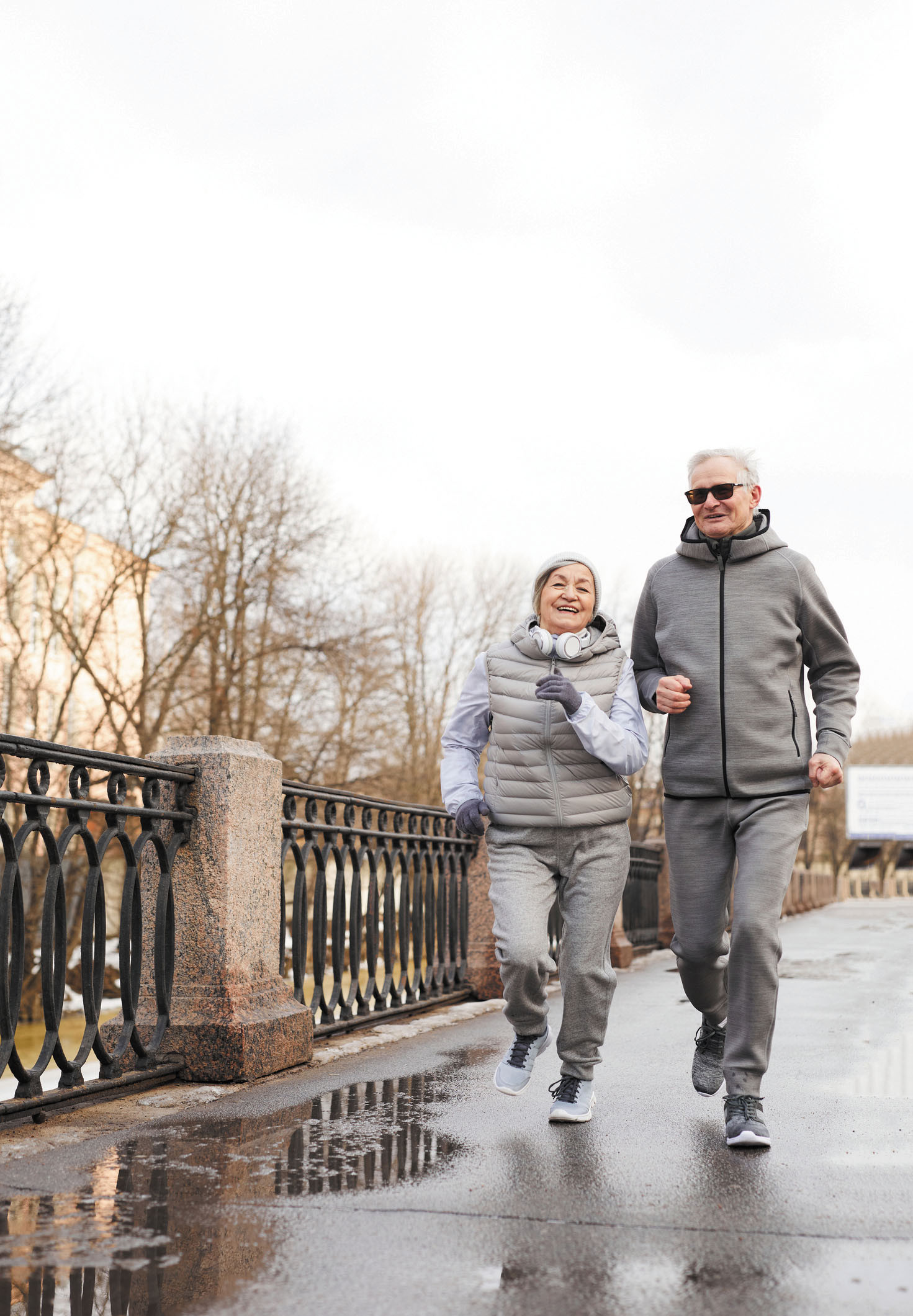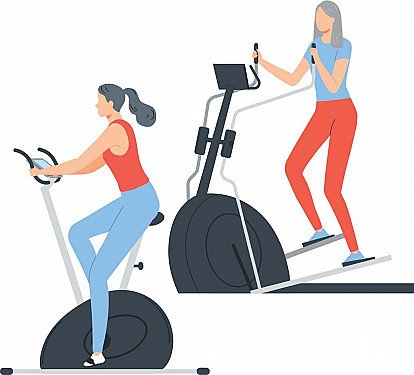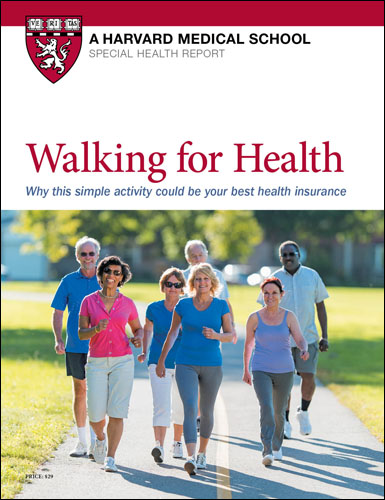Revitalize your walking routine
Need some motivation to maintain your commitment to this heart‑friendly exercise? Try these suggestions.
- Reviewed by Deepak L. Bhatt, M.D., M.P.H, Former Editor in Chief, Harvard Heart Letter
 Taking a daily walk is a great way to keep your heart and blood vessels healthy. This simple, do-anywhere exercise can lower cholesterol, reduce blood pressure, and control blood sugar. "Walking for 20 to 30 minutes a day can cut your risk of heart disease by about 30%," says Dr. Lauren Elson, a physiatrist at Harvard-affiliated Spaulding Rehabilitation Network.
Taking a daily walk is a great way to keep your heart and blood vessels healthy. This simple, do-anywhere exercise can lower cholesterol, reduce blood pressure, and control blood sugar. "Walking for 20 to 30 minutes a day can cut your risk of heart disease by about 30%," says Dr. Lauren Elson, a physiatrist at Harvard-affiliated Spaulding Rehabilitation Network.
But if your regular neighborhood jaunt starts feeling a little humdrum, you might need some extra inspiration to keep lacing up your walking shoes each day. If you're interested in further enhancing your cardiovascular health, add some short bursts of fast walking to your workout, suggests Dr. Elson, who is the medical editor of the Harvard Special Health Report Walking for Health. If you always walk at the same pace, your body adapts to that activity level, and the heart-related benefits start to plateau. Alternating short periods of fast walking with equal or longer periods of slower walking (a practice known as interval training) can ramp up your cardiac fitness in a shorter amount of time. Other strategies you can try (alone or in combination with interval training) include distractions or goals — along the journey or at the destination.
What you'll need
For doing intervals, a watch with a second hand works, but a timer makes things easier. Look for one that lets you preset both work and recovery times and then alerts you when it's time to speed up or slow down. You can buy an individual timer like GymBoss, use a sports watch or smart watch with an interval function, or download an interval timer app to your smartphone. A pair of earbuds also comes in handy, but it's safer to use just one earbud while you're walking, which keeps your other ear free for sounds in your environment that can alert you to hazards, such as approaching cars. See "Dress for walking success" for other recommendations.
Marching orders for interval walking
Most interval routines are based on time — pick up your pace for 30 or 60 seconds, then slow back down to your normal stride for one or two minutes. The quick bursts can last for as little as eight seconds or up to four minutes, followed by an equal or longer length of time for recovery. One variant of interval training known as Tabata flips the script: The recovery periods are shorter than the high-intensity periods. The classic version alternates between 20 seconds at high intensity and 10-second recovery bouts.
Don't want to use a timer? Use landmarks to mark your intervals. For example, walk fast for one block, then slow down for two blocks. Or speed up between two telephone poles, or a quarter of a lap around a local track. You could also count your steps (do 25 fast steps, followed by 50 at a regular pace) or use music as a cue: walk fast for one song and then ease up for two songs.
Adding interest to walks
Instead of music, you can listen to audiobooks or podcasts. All you need is a library card to borrow free audiobooks from your local library using the Libby app (www.overdrive.com/apps/libby). To find podcasts of interest, do a quick Google search; popular genres include comedy, news, society and culture, true crime, and sports. There are currently more than two million active podcasts worldwide, so keep perusing until you find one that grabs you. One idea: The Walk (https://thewalkgame.com), a combination game and fitness tracker that features a spy story that only reveals itself as you rack up the required miles.
If you prefer old-school printed books, seek out Little Free Libraries, which are free book exchanges where anyone can take or leave books. Use the app (https://littlefreelibrary.org/app) to choose one or more as a walk destination in your neighborhood. Alternatively, try geocaching — a high-tech treasure hunt for hidden stashes of objects; see www.geocaching.com. You'll get a physical and mental workout as you navigate to the location and then search to find the geocache container.
Dress for walking successWalking doesn't require any special attire, although good footwear is important (see "Tips for choosing walking shoes" in the May 2022 Heart Letter). But some additional items may improve your walking experience. A hat with a brim. Wearing a brimmed hat can help you maintain good posture by keeping sun or rain out of your eyes. People tend to look down to shield their eyes, and even if you wear sunglasses, rays can sneak in over the top of the frames. Waterproof shoes. If you live in an area with a lot of rain, waterproof shoes may be worth the investment. Wet feet are more susceptible to blisters. Slim-leg pants, leggings, or bike shorts. Wide-leg pants or capris can flap as you walk, which can be annoying and may even slow you down. Lycra or spandex bike shorts can help prevent chafing by minimizing friction when your thighs rub together. Slip a pair of regular shorts or pants over the top if you don't want to wear skin-tight clothes in public. Reflective clothing or gear. If you're out in the early morning or late evening, wear reflective gear from head to toe. The more your reflections resemble a human form—instead of just some random lines or a moving dot—the safer you'll be. Waist pack. To stash your phone, keys, and anything else, a waist pack is usually more comfortable than a backpack. Some have pouches that can hold water bottles, which come in handy during warm weather. Source: Harvard Special Health Report Walking for Health. |
Image: © SeventyFour/Getty Images
About the Author

Julie Corliss, Executive Editor, Harvard Heart Letter
About the Reviewer

Deepak L. Bhatt, M.D., M.P.H, Former Editor in Chief, Harvard Heart Letter
Disclaimer:
As a service to our readers, Harvard Health Publishing provides access to our library of archived content. Please note the date of last review or update on all articles.
No content on this site, regardless of date, should ever be used as a substitute for direct medical advice from your doctor or other qualified clinician.
















